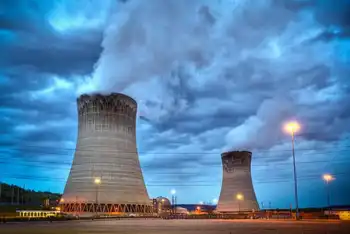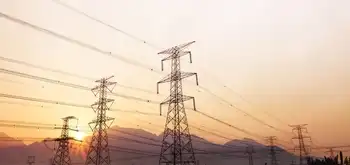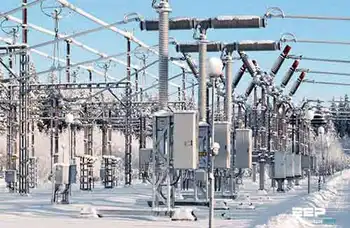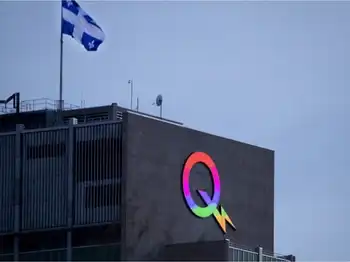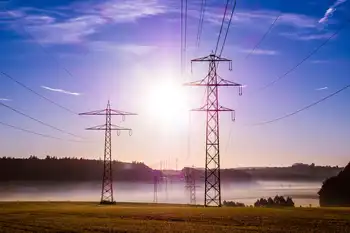Utilities responsiveness more effective than federal government during Sandy
By J.D. Power and Associates
Protective Relay Training - Basic
Our customized live online or in‑person group training can be delivered to your staff at your location.

- Live Online
- 12 hours Instructor-led
- Group Training Available
Overall, state governments and electric utilities provided more effective responsiveness and handling of the 2012 Hurricane Sandy emergency than did local and federal governments, according to the J.D. Power and Associates 2013 Hurricane Sandy Responsiveness StudySM released recently.
Key Findings
Nearly one-half 44 of all customers used a mobile device cellphone, smartphone or tablet to gather information regarding their power outage.
Two-thirds 66 of all customers say that power lines should be buried but only 37 percent say they would accept a rate increase of $12 per month to bury the power lines.
The average outage among the customers surveyed was two days.
The study is based on interviews of more than 5,900 U.S. residential customers in 31 utility territories impacted by Hurricane Sandy. The online survey was conducted from January 4 to January 11, 2013. Overall responsiveness is measured by examining three areas across electric utilities and local, state, and federal governments: preparedness for the hurricane efforts to support hurricane recovery and effectiveness of communications.
The emergency responsiveness of state governments and electric utilities 611 and 610, respectively, on a 1,000-point scale surpass local governments 598 and the federal government 539 in overall responsiveness to the emergency.
Hurricane Sandy's damage is estimated at $50 billion and is considered the second-costliest hurricane in U.S. history.1 During the October 2012 hurricane event, approximately 8.5 million customers lost power,2 and 65,000 utility workers responded from 80 utilities from nearly every state and Canada, dispatching crews and equipment to impacted areas.3 During the hurricane, 43 percent of all customers surveyed experienced a power outage lasting 24 hours or longer. The average outage duration among all customers surveyed was 48 hours.
"Overall, the federal government does not receive high ratings from customers impacted by Hurricane Sandy. For utilities and local and state governments, the results are more mixed, with some receiving high ratings for their effectiveness of handling of the emergency and a few receiving low ratings," said John Hazen, senior director of the energy utility practice at J.D. Power and Associates.
The Connecticut, Delaware and New Jersey state governments perform highest in the study in overall responsiveness to the hurricane emergency. Among the 15 states included in the study, Ohio, Pennsylvania and West Virginia perform lowest in responsiveness to the emergency. Customers in New Jersey, New York and West Virginia rate the federal government lowest in responsiveness to the emergency, while Maine and Maryland rate the federal government highest in responsiveness.
Among customers with extensive outages average length of 24 hours or longer, three electric utilities perform particularly well in the study: Atlantic City Electric, Central Hudson Gas & Electric and PPL Electric Utilities. Local governments that perform well overall include cities within the counties of Bronx New York, Burlington New Jersey and New Haven Connecticut.
Obtaining timely outage information is critical to utility customers. Customers received most of their information regarding the outage by calling their utility directly 37 listening to radio or watching TV 29 and going directly to their utility's website 17. Nearly three-fourths 71 of customers who made contact with their utility during the outage used their mobile cellphone or smartphone. Satisfaction is highest among customers who say they received proactive outbound communications, in which their utility sent emails, text messages or outbound phone calls.
The study finds that customers' perceptions of work crews deployed during the storm recovery varied. One-half 50 of all customers observed their utility's crews working at their home or elsewhere in their area. Also, 18 percent of all customers observed work crews from other utilities assisting in restoration efforts. Satisfaction with efforts to support recovery increases when customers observe their local utility's crew working. However, satisfaction declines when customers observe only crews from utilities other than their own out working. Fifty-four percent of customers agree other utilities' work crews were more knowledgeable and courteous 52 than local utilities' work crews on knowledge 50 and courtesy 44.
"The study indicates the No. 1 lesson learned from experience during and after Hurricane Sandy among customers hardest hit power outage lasting longer than 24 hours is to purchase survival gear, including flashlights and non-perishable food, ahead of a major storm," said Hazen.
Thirty-seven percent of customers indicate that they were very prepared for Hurricane Sandy however, only 20 percent perceived that their local community was very prepared. Only 14 percent of customers used a portable generator, and three percent used a built-in back-up home generator during the hurricane. Among customers who did not use a generator, 49 percent say that they would now consider purchasing a generator.
As a preventive measure against storm-related power outages, 66 percent of all customers agree that "power lines should be buried underground in your area" with 20 not having an opinion. However, only 37 percent of customers say they are "willing to accept a rate increase in order for power lines to be buried." Among customers willing to accept a rate increase, $12 per month is the average bill increase they are willing to accept in order for power lines to be buried.
[1] Source: The National Hurricane Center, http://www.nhc.noaa.gov/data/tcr/AL182012_Sandy.pdf accessed 2/12/2013
[2] Source: U.S. Department of Energy. Office of Electricity and Reliability Situation Reports
[3] Source: Edison Electric Institute, http://www.eei.org/newsroom/pressreleases/Releases/Pages/121101.aspx accessed 2/19/13





